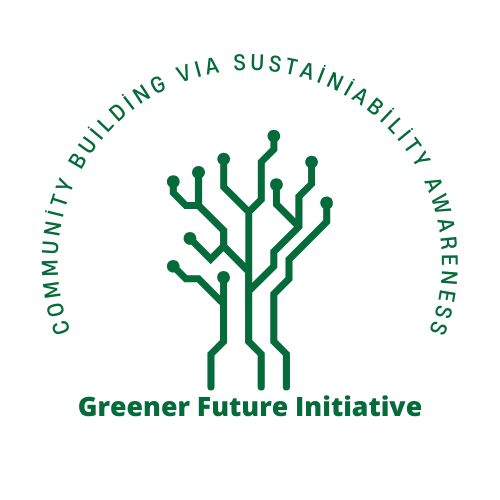How far have COP and the Paris Agreement gone? This is the focus of this article. But first, we will start by going down the memory lane in history.
The global fight against climate change has brought together nations from across the world. A key part of this effort is the Conference of the Parties (COP) and the Paris Agreement. These two have become central in the international climate dialogue, shaping how countries address the urgent issue of global warming.
In this article, we will explore the history of COP and the Paris Agreement, and what the latest status is in terms of climate action.
Key Takeaways
- COP (Conference of the Parties) is an annual event where nations gather to discuss and negotiate climate action.
- The Paris Agreement, adopted in 2015, aims to limit global warming to below 2°C, with efforts to limit it to 1.5°C.
- The Paris Agreement encourages countries to set their own climate action targets, known as Nationally Determined Contributions (NDCs).
- Recent COP events have focused on the progress made in reaching Paris Agreement goals, with particular emphasis on financing and adaptation.
- As of the latest COP summit, many countries are still struggling to meet their climate commitments.
The Birth of COP: A Global Effort for Climate Action
The need for international climate cooperation became clear in the early 1990s. Scientists warned that human activities, particularly the burning of fossil fuels, were causing the planet to warm at an unprecedented rate.
In response, the United Nations (UN) held the first major climate conference in 1992, known as the Earth Summit, in Rio de Janeiro. This event marked the beginning of the international climate policy framework.
The Creation of the UNFCCC
At the Earth Summit, nations adopted the United Nations Framework Convention on Climate Change (UNFCCC). This was a landmark agreement that aimed to prevent dangerous human interference with the climate system. The UNFCCC established a formal process where countries would meet annually to assess progress and negotiate further actions. These annual meetings are now known as COP, or the Conference of the Parties.
The first COP meeting took place in 1995 in Berlin, Germany. COP meetings have continued to take place each year, with the host country changing each time. Over the years, these conferences have evolved into the primary global platform for addressing climate change.
The Road to the Paris Agreement
While the COP meetings focused on raising awareness and fostering discussions on climate change, the breakthrough came in 2015 during COP21 in Paris. Prior to this, earlier COP meetings had resulted in some key agreements, including the Kyoto Protocol in 1997. This sets binding emissions reduction targets for developed nations. However, it was clear that a more comprehensive and globally inclusive agreement was needed.
COP21: The Historic Paris Agreement
The Paris Agreement, adopted on December 12, 2015, at COP21, marked a significant turning point in the global fight against climate change. It was the result of years of negotiations and compromises between over 190 countries.
Unlike the Kyoto Protocol, the Paris Agreement was designed to be universally applicable, with both developed and developing nations committing to take action.
Key Objectives of the Paris Agreement:
- Global Temperature Goal: The agreement set a target to limit global warming to well below 2°C, with efforts to limit it to 1.5°C above pre-industrial levels. This goal aims to reduce the risks and impacts of climate change.
- Nationally Determined Contributions (NDCs): Each country voluntarily submits its own climate action plan or target. These NDCs are updated every five years to reflect increased ambition.
- Climate Finance: Developed countries pledged to provide financial support to developing nations to help them mitigate and adapt to climate change.
- Transparency and Accountability: Countries are required to report their emissions and progress on their NDCs, ensuring transparency and accountability.
The Paris Agreement’s flexibility was one of its key strengths. Countries were not bound to legally enforceable emissions reduction targets but were encouraged to take ambitious actions and work towards the common goal.
This approach allowed for broader participation, including major emitters like China and the United States.
The Role of COP in Implementing the Paris Agreement
Since the adoption of the Paris Agreement in 2015, subsequent COP meetings have focused on ensuring its implementation. These annual gatherings serve as checkpoints, where nations review their progress and refine their climate action plans.
COP22 to COP26: Progress and Challenges
Following COP21, the world’s attention turned to how nations would follow through on their commitments. The COP22 meeting in 2016, held in Marrakech, Morocco, aimed to define the rules and guidelines for the implementation of the Paris Agreement. It also focused on the Paris Rulebook, which established procedures for countries to report their emissions and climate action efforts.
In 2018, COP24 took place in Katowice, Poland. This conference sought to finalize the Paris Rulebook and clarify the mechanisms for monitoring and increasing climate ambition. However, the challenge remained in urging countries to strengthen their commitments and ramp up climate action.
The COP25 meeting in 2019, held in Madrid, Spain, was marked by the urgent need for stronger action to combat climate change. COP25 fell short of delivering breakthroughs. Many nations struggled to increase their ambitions and follow through on the promises made at COP21.
At COP26, held in Glasgow in 2021, the world focused on accelerating climate action and enhancing the commitments made under the Paris Agreement. The Glasgow Climate Pact, adopted at COP26, called for countries to revisit their NDCs and increase their emissions reduction efforts. Although there was recognition of the urgency of the climate crisis, some critics argued that the commitments were insufficient to meet the 1.5°C goal.
The Latest Status of the Paris Agreement: Where Are We Now?
As of now, we are still far from achieving the Paris Agreement’s climate goals. While many countries have taken steps to reduce emissions and invest in renewable energy, global temperatures continue to rise at an alarming rate. Recent scientific reports, including those from the Intergovernmental Panel on Climate Change (IPCC), have underscored the need for immediate and substantial action to avoid catastrophic climate impacts.
Current Challenges and the Road Ahead
- Ambition Gap: Despite progress, there is a significant gap between current emissions reduction pledges and what is necessary to limit global warming to 1.5°C. Current NDCs would result in global temperatures rising by around 2.7°C by the end of the century.
- Finance for Developing Nations: One of the key pillars of the Paris Agreement was the promise of climate finance. However, developing nations are still waiting for the $100 billion per year in climate funding that was pledged by developed countries. This funding is crucial to help these countries adapt to climate change and transition to green economies.
- Adaptation and Loss and Damage: While mitigation efforts (reducing emissions) remain a priority, the need for adaptation (preparing for the impacts of climate change) is becoming more urgent. Additionally, discussions on addressing loss and damage from climate change, especially in vulnerable countries, are gaining attention.
Upcoming COP: COP28 and Beyond
The most recent COP meeting was COP28, which took place in Dubai, United Arab Emirates in 2023. This meeting marked the midpoint in the Paris Agreement’s “5-year ambition cycle.” Key discussions included accelerating the transition to renewable energy, enhancing climate finance, and addressing the loss and damage caused by climate impacts.
Looking ahead, COP29 and subsequent meetings will likely focus on further increasing global ambition. The pressure is mounting as the world faces increasingly severe climate impacts. Leaders will need to adopt even stronger measures to meet the Paris Agreement’s long-term goals.
Conclusion
The journey of COP and the Paris Agreement has been one of continuous negotiation, commitment, and challenges. While there have been notable successes in bringing nations together to address climate change, much work remains. The future of the planet depends on the collective action taken by governments, businesses, and individuals to meet the promises made under the Paris Agreement.

